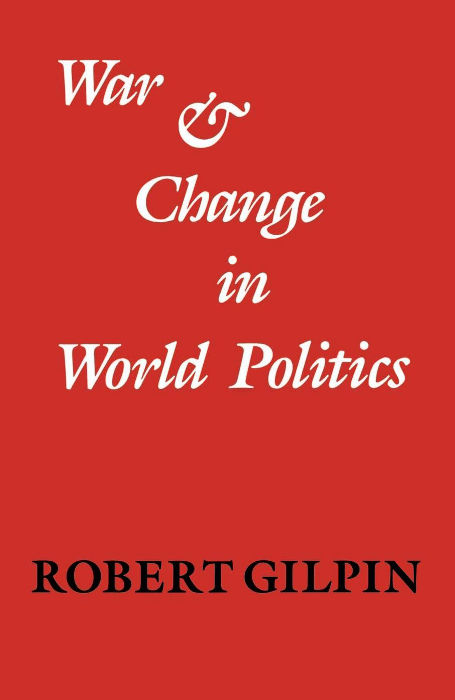Books
Robert Gilpin
War and Change in World Politics
Robert Gilpin’s War and Change in World Politics dismantle the illusion of a static global order, exposing how power imbalances ignite history’s most transformative conflicts. By merging historical analysis with economic theory, Gilpin reveals a grim truth: states rise, challenge hegemonies, and wage war to reshape the system in their favor. From ancient empires to modern superpowers, this cycle of dominance and decline remains unbroken. For scholars and policymakers alike, this book is a masterclass in understanding why today’s geopolitical tensions are rooted in timeless struggles for power.
Gilpin’s seminal work argues that international systems stabilize only when no state sees profit in overturning the status quo. When power shifts—due to uneven economic growth, technological advances, or military expansion—rising states calculate the costs and benefits of challenging the established order. If the expected gains outweigh the risks, they pursue territorial, political, or economic expansion until equilibrium is restored, often through hegemonic war. Gilpin illustrates this with historical turning points: Britain’s naval dominance, Germany’s pre-WWI ambitions, and the Cold War’s bipolarity. Central to his thesis is the idea that nuclear weapons and globalization have not abolished this dynamic; they merely alter its expression.
The book introduces three types of change: systemic (shifts in governance, like the transition from British to U.S. hegemony), system (changes in actor identities, such as the rise of nation-states), and interaction (new rules or institutions). Gilpin emphasizes that declining hegemons, burdened by the costs of maintaining global stability, face inevitable challenges from ascendant powers. This „differential growth of power“ creates disequilibrium, where rising states like China today or Germany in the 19th century seek to redraw borders, influence norms, or control resources. The result is a world where war remains a tragic but rational tool for redistributing power
Gilpin’s framework stands out for its unflinching realism. While critics argue it underestimates the role of ideology, international organizations, or economic interdependence, his focus on material power and cost-benefit calculations offers a lucid lens for decoding global chaos. The book’s enduring relevance lies in its diagnosis of recurring patterns—whether in the Peloponnesian War or modern U.S.-China rivalry—and its warning that without mechanisms for peaceful change, hegemonic conflict is inevitable. Though written during the Cold War, its insights into power transitions resonate deeply in an era of multipolarity, making it indispensable for understanding the forces shaping tomorrow’s world order.

